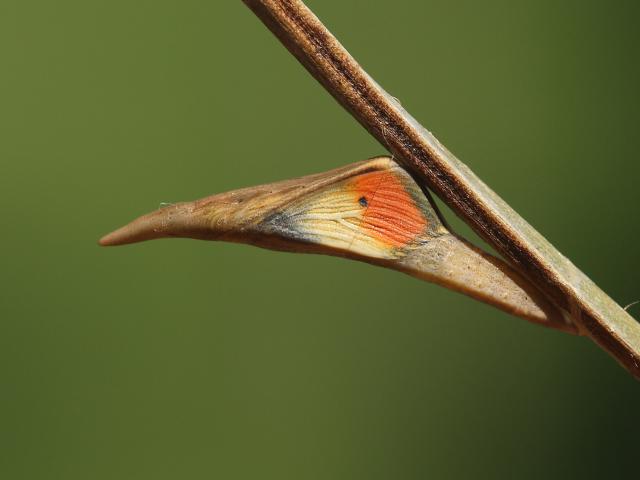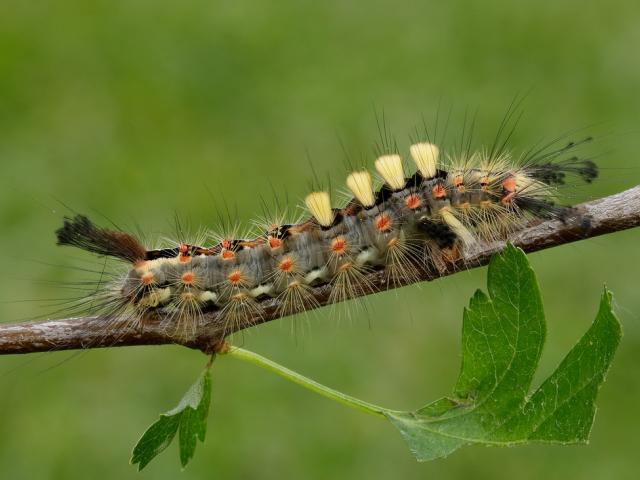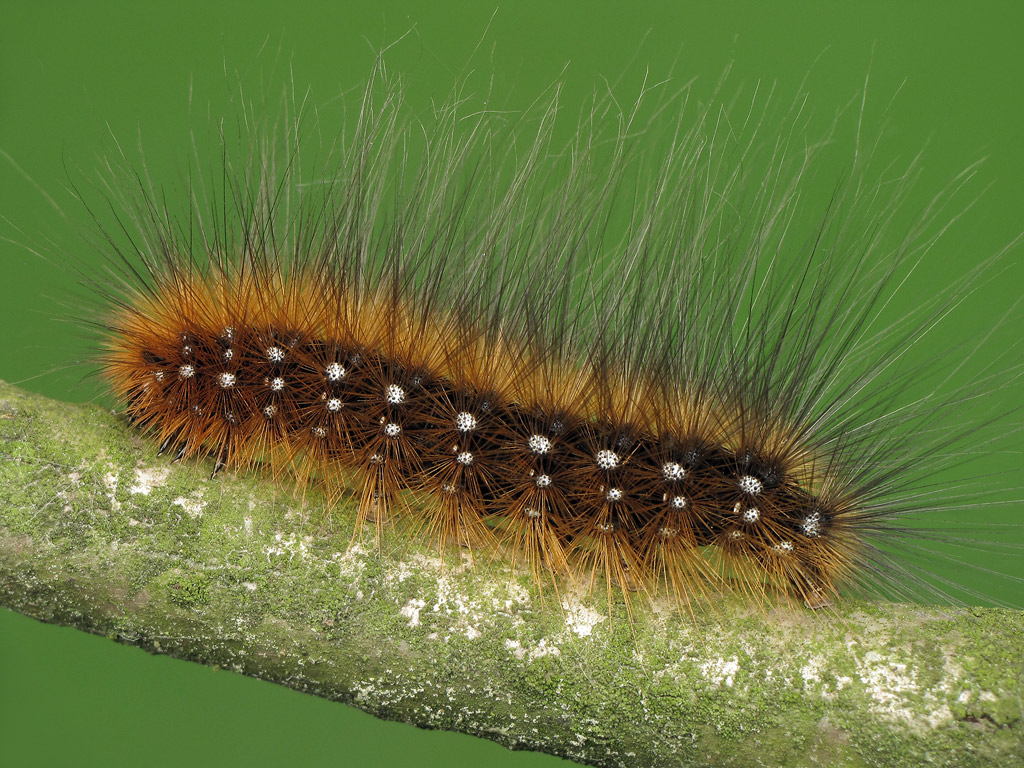As gardeners, we always tend to have one eye on the present, while looking forward to the future. It rarely stops, except in the depths of winter when everything that can be done, is done.
In autumn, the immediate jobs we are encouraged to do involve a great deal of tidying up. This certainly has its place; better to tackle an unruly hedgerow now than in the spring when birds are nesting in it. But when we do this it is important that we consider just where the insect life is living at this time. With over 2,500 species of butterfly and moth in the UK, there’s a bewildering array of lifecycles; while many will be safely underground over winter, there are plenty which stay above ground as eggs, caterpillars or chrysalises.
They may be attached to twigs and branches, nestled at the bases of herbaceous plants, or even enveloped in a leaf or stalk in the leaf litter. The thing to remember is that they are all in a paused state; they are waiting for spring. They cannot move if we come along with our secateurs, or to escape a bonfire or chipping machine. So we must give them time, and wait with them.
Masters of disguise

Unfortunately, if we cut and remove absolutely everything in the garden, we risk wiping out some of what would be next year’s adult insects. And it’s no wonder we do this, as they are truly masters of disguise. For example, Orange-tip butterflies spend in the winter as a thorn-shaped pupa which turns pale brown over time, matching perfectly the winter colours of the woody plant stems it is attached to. Many species, including the Garden Tiger moth, overwinter in the leaf litter at the base of plants, where they spin their cocoons.
But we need to maintain our gardens to some extent, and in my garden when I do any pruning I tend to simply make loose stacks of the branches, tucked away in the quiet corners of the garden or under trees. That way, any attached insects can at least have a chance of surviving. These can also give shelter for hedgehogs and birds through the winter, and as they rot down can be homes for beetles and other invertebrates. On the ground, I only remove leaves from the lawn and paved areas. I allow the other leaves to stay where they fall, and herbaceous plants to die back naturally. This helps keep down the weeds, which would otherwise exploit the bare patches left in the soil if I removed the dead material entirely. It also allows those insects in or under those leaves to complete their life cycles.
Planting for life cycles

And I look ahead in Autumn and get planting for next year. The simplest and most readily available are bulbs. While retailers may now be selling out of the most popular bulbs, I’d recommend planting Grape Hyacinth, Allium, Snake’s-head Fritillary and Iris. Even the hyacinths with the very large, heavily-scented flowers can be very useful for insects early on in the year. The ones we get for our homes at Christmas rarely perform well indoors in subsequent years, but will be fine outdoors – I’ve got quite a lot of them now!
Overall, most daffodils we get in garden centres are not useful for insects, and I am afraid that they are what I call ‘plastic plants’.
Autumn is also the time to plant bare-root trees and shrubs. These are often much less expensive than the potted ones you can buy in spring, so you can buy more! As most of our butterflies and moths are adapted to laying their eggs on native trees, my top recommendations for medium-sized gardens are birch, rowan, willow, hawthorn, hazel, Dog-rose and holly. But if you’ve got a larger garden, then oak, elm and aspen would be good choices.
A favourite of mine are apple trees, and I truly believe you can find an apple for any size of garden. Even in tiny gardens, you can train them along walls and fences. The flowers are incredibly attractive to insects, while the leaves are eaten by various moth species, including the wonderful Vapourer moth, whose caterpillars look incredible. I had several dozen of them on my apple tree last summer and still had a larger harvest of apples than I could eat, showing me that really we don’t need to go around removing every munching caterpillar we see.
So to summarise, I say that if we want to encourage more wildlife in the garden, we need to genuinely give over space for our insects to complete their entire life cycles, not just feeding them with flowers in the summer.
Anthony McCluskey is the Project Officer for our Helping Hands for Butterflies project in Scotland, which works with volunteers to monitor butterfly populations and create habitats. He is a keen gardener and has studied with the Royal Horticultural Society and Royal Botanic Garden Edinburgh.


